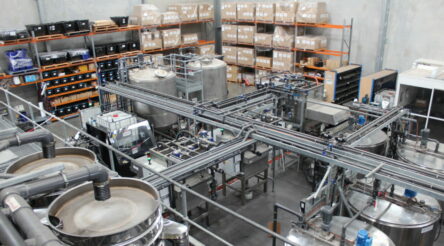Gradually getting under your skin
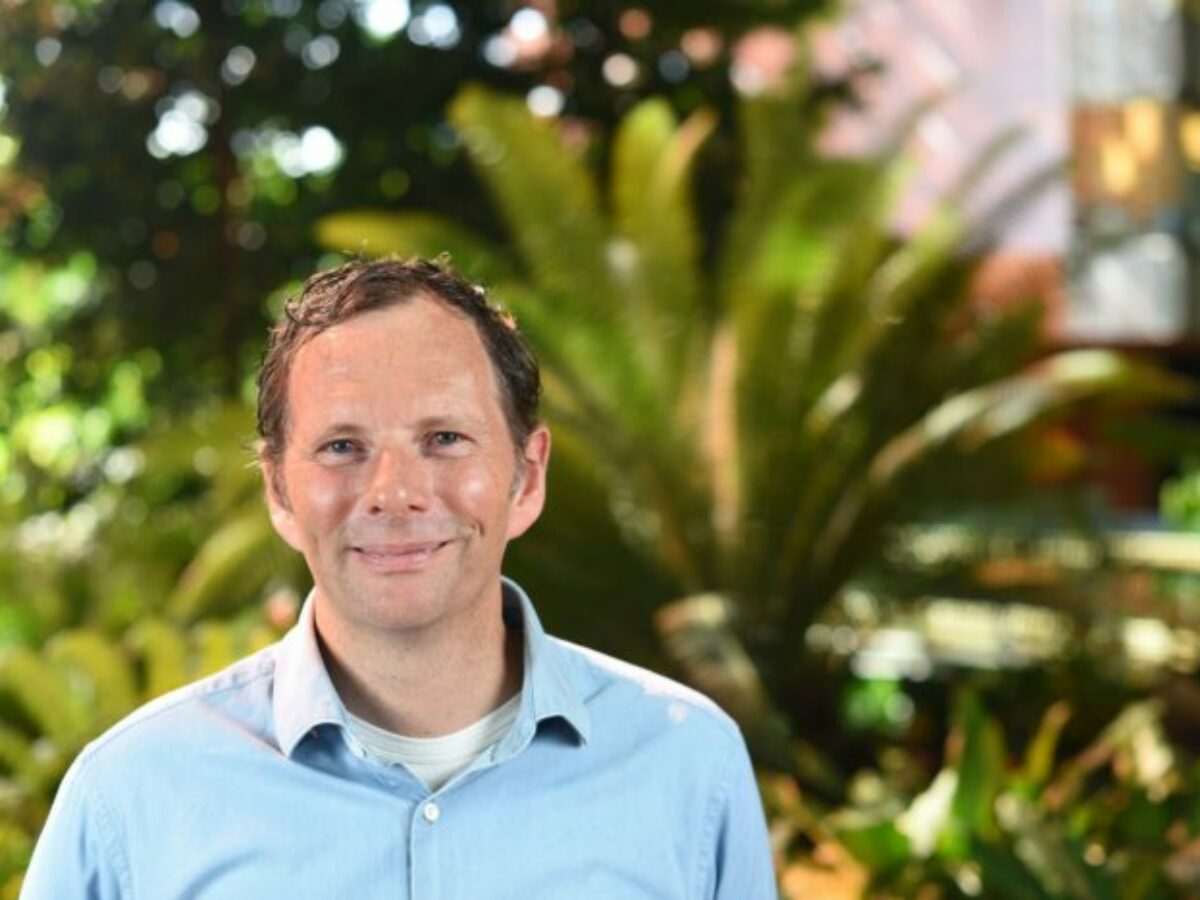
By Brent Balinski
Nobody is exactly keen on getting a needle, and getting rid of them is an old idea.
Some articles trace an alternative, microarray patches, back to the 1970s, but today we still generally get our vaccines and various other drugs the old way – jabbed into our muscles.
Ideas are easy, but implementation is hard, as the saying goes. This is especially true in the biotech industry.
Today there are various kinds of microarray patches (MAPs) in development. Some are dissolvable, others have hollow spikes, and others have solid, coated spikes. According to one expert working on MAPs commenting in 2020, there are about 90 groups around the world working on them.
Dr Angus Forster (main picture), the CTO at Vaxxas – an Australian company established in 2011 to commercialise MAPs for vaccine delivery and based on research at University of Queensland – agrees that it’s a kind of a gold rush.
“People see this as a significant opportunity. And the vaccine market post-Covid is about $130 billion US per annum. That’s a lot of room for various companies to play. Almost all of that is given through needle and syringe,” he tells @AuManufacturing.
“What we know is that skin vaccination works. So the challenge has always been how do you commercialise and develop the device component to enable that dose to be given consistently, to make it really, really simple and intuitive to use, so it doesn’t have to be a nurse or a doctor to give the vaccination.”
The company of about 140 is developing their own HD-MAP delivery system. The HD stands for high-density, with about 2,500 microprojections about 0.3 millimetres long fit onto a centimetre square patch and coated in a dry vaccine.
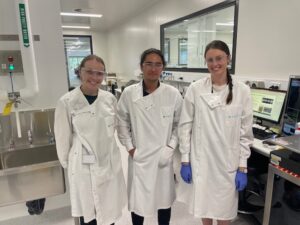 Vaccines are the target because of the high population of immune cells below the outer layer of skin. This allows for vaccine sparing, as well as pain-free delivery. Dried vaccines are also much more stable, and a cold chain isn’t needed for their storage.
Vaccines are the target because of the high population of immune cells below the outer layer of skin. This allows for vaccine sparing, as well as pain-free delivery. Dried vaccines are also much more stable, and a cold chain isn’t needed for their storage.
Forster, who has been at the company since 2012, says that seasonal influenza will probably be the first drug to market using Vaxxas’s technology. The results of two phase one trials have been published and a third trial completed. About half a dozen clinical programs are underway.
“Big companies that make vaccines have really established manufacturing capability all over the world to make huge volumes of product. So we’re trying to convince them that there’s a better way of doing it,” he says.
“And they’ve invested billions of dollars into infrastructure around needle and syringe.”
Their Northshore Brisbane facility opened in June, and can currently make about 500 patches a day – enough for phase one trials.
“This facility has been designed to be an end-to-end manufacturing facility, from essentially raw materials through to finished product and device components, and the vaccine-coated array finished product,” adds Forster.
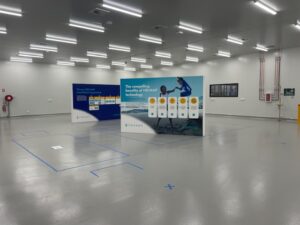 One of the first things to be brought in-house is patch production. These are injection moulded out of biomedical polymer, with the process designed with help from a Singaporean micro-moulding specialist Vaxxas has been working with since 2012.
One of the first things to be brought in-house is patch production. These are injection moulded out of biomedical polymer, with the process designed with help from a Singaporean micro-moulding specialist Vaxxas has been working with since 2012.
Each applicator pack includes a patch, a plastic insert, a spring behind an insert, a retainer and a can body.
Metal stamping to create the spring component will also be set up in the first or second quarter of next year, says Forster.
The shell will eventually be made in-house, but this is a lower priority.
“At the moment that’s made overseas by companies making massive volumes of coffee pods,” adds Forster.
“There’s less urgency to bring that process into this facility, because it’s relatively well-established, high-volume, low-cost food-grade manufacturing. We will bring it in, but it will be progressive. It’s basically the same process as metal stamping.”
The company has also developed its own inkjet printing-inspired process for precisely coating patches with vaccine, with the help of collaborators including Griffith University. It includes a stage adopted from the semiconductor industry, a camera system, and custom-built software to align a nozzle with all the micro-projections and distribute “drop on demand”, with each drop between 200 and 400 picolitres.
It has taken a lot of effort for Vaxxas to reach this stage, but commercialisation is still some way off. According to an The Australian Financial Review article a year ago, Vaxxas has raised about $100 million in equity funding, and more than that amount in non-dilutive financial support.
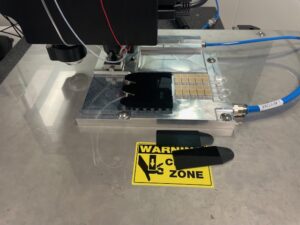 At this stage, they are targeting 2028 for a first product to market.
At this stage, they are targeting 2028 for a first product to market.
“That depends on how fast we work through those clinical studies,” explains Forster.
“This type of development and commercialisation is expensive, it’s difficult, it requires a lot of people to move it forward, and not everything you do works out the way it should do… It’s why big pharma normally do late-stage clinical studies.
“Because they’re difficult to do, they’re hugely expensive and complex in their design and implementation and supply of product into them. But I think the signs are really encouraging and with this facility we’ve got that sort of foundation now where we can start to think that we can move it, but obviously to progress requires additional investment, either from partners or other sources of money including the government.”
In this episode of @AuManufacturing Conversations with Brent Balinski, recorded at Vaxxas’s factory last month, Forster tells us about progress, the challenges of replacing a 170-year-old technology, and why there’s a surge of interest in biotech but a lack of appreciation for the pace at which it moves.
Episode guide
0:25 – Personal background and work at Vaxxas since 2012. Plus what an explanation of what the company is trying to do.
2:03 – The first patents on the needle-and-syringe go back about 170 years, and weren’t designed specifically for vaccination.
3:10 – What is a microarray patch and what does it do?
4:33 – The advantages of dried vaccines on micro-projections.
5:34 – The large field competing to develop microarray patches for vaccine delivery methods.
7:05 – Scaling up.
9:04 – Types of vaccines in clinical trials currently.
10:24 – What’s special about their new facility.
11:35 – Current schedule for first product to market in 2028. What are some of the challenges?
12:32 – Trying to find a place in the supply chain for vaccine delivery.
14:10 – The difficulties and benefits of remaining in Australia.
15:40 – Preparing the facility to be audited by TGA for Phase 2 and 3 studies and for genuine manufacturing.
17:40 – There’s a desire to build biotech companies, but the amount of time and money required for this isn’t always appreciated.
@aumanufacturing Sections
Analysis and Commentary Awards Defence Manufacturing News Podcast Technology Videos










